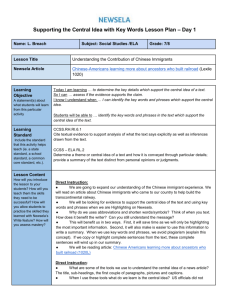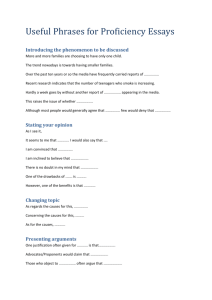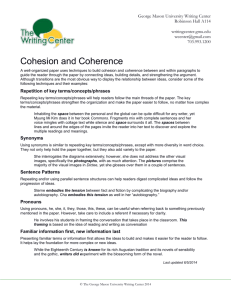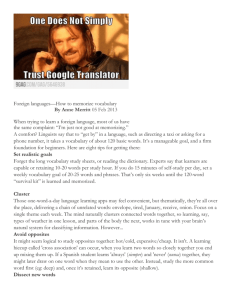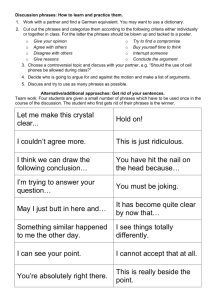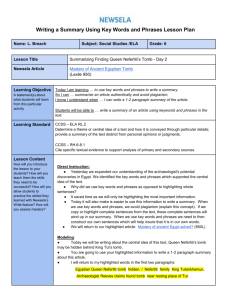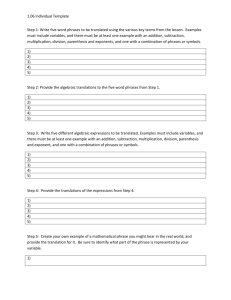BreachMSSummary
advertisement
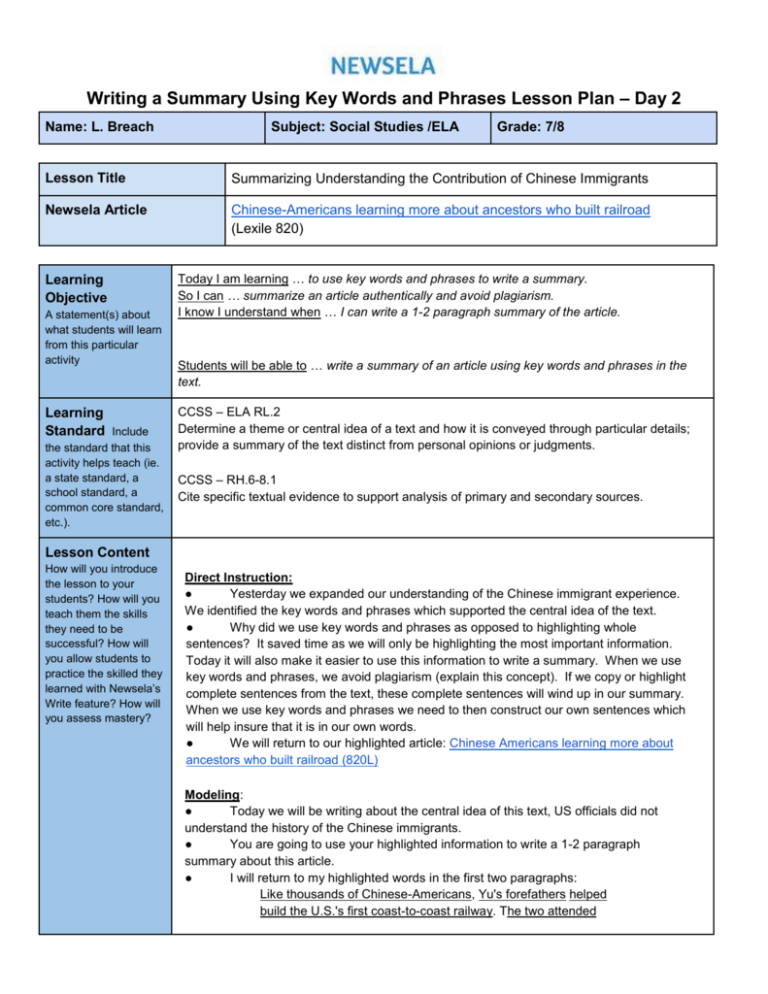
Writing a Summary Using Key Words and Phrases Lesson Plan – Day 2 Name: L. Breach Subject: Social Studies /ELA Grade: 7/8 Lesson Title Summarizing Understanding the Contribution of Chinese Immigrants Newsela Article Chinese-Americans learning more about ancestors who built railroad (Lexile 820) Learning Objective A statement(s) about what students will learn from this particular activity Learning Standard Include the standard that this activity helps teach (ie. a state standard, a school standard, a common core standard, etc.). Today I am learning … to use key words and phrases to write a summary. So I can … summarize an article authentically and avoid plagiarism. I know I understand when … I can write a 1-2 paragraph summary of the article. Students will be able to … write a summary of an article using key words and phrases in the text. CCSS – ELA RL.2 Determine a theme or central idea of a text and how it is conveyed through particular details; provide a summary of the text distinct from personal opinions or judgments. CCSS – RH.6-8.1 Cite specific textual evidence to support analysis of primary and secondary sources. Lesson Content How will you introduce the lesson to your students? How will you teach them the skills they need to be successful? How will you allow students to practice the skilled they learned with Newsela’s Write feature? How will you assess mastery? Direct Instruction: ● Yesterday we expanded our understanding of the Chinese immigrant experience. We identified the key words and phrases which supported the central idea of the text. ● Why did we use key words and phrases as opposed to highlighting whole sentences? It saved time as we will only be highlighting the most important information. Today it will also make it easier to use this information to write a summary. When we use key words and phrases, we avoid plagiarism (explain this concept). If we copy or highlight complete sentences from the text, these complete sentences will wind up in our summary. When we use key words and phrases we need to then construct our own sentences which will help insure that it is in our own words. ● We will return to our highlighted article: Chinese Americans learning more about ancestors who built railroad (820L) Modeling: ● Today we will be writing about the central idea of this text, US officials did not understand the history of the Chinese immigrants. ● You are going to use your highlighted information to write a 1-2 paragraph summary about this article. ● I will return to my highlighted words in the first two paragraphs: Like thousands of Chinese-Americans, Yu's forefathers helped build the U.S.'s first coast-to-coast railway. The two attended ceremonies /hundredth anniversary/ during the ceremonies/ Volpe ignored the Chinese migrant contribution.” ● I will use this to create my summary: Today, many Chinese-Americans do not fully understand the contributions of their ancestors. Many Chinese immigrants came to this country to help build the transcontinental railroads. For those who attended the hundredth anniversary celebration ceremony, they saw that the contributions of these workers was not discussed. ● How did I make this summary my own? I used synonyms (forefathers – ancestors, ignored – not discussed). I changed the order of how the information was presented. I left out specific information (Yu/Volpe) and made it more general. Student Practice: ● Now you will take the next section of highlighted text and create a 1-2 sentence summary. Try the strategies of using synonyms and changing the order. In the years since, Yu and others / flesh out the stories / longanonymous Chinese migrants ● Have students share their examples. ● Directions: ○ Now return to the words you highlighted yesterday and continue writing your summary. ● Options: Provide a Google doc with the all key words and phrases from article (prior day’s lesson) and have students work directly on the document or teacher can anticipate student need and share sample annotations on student Newsela article Guided Questions: ● Why are the challenges to writing this summary? ● What strategies are most helpful for you? ● Why is this evidence important to the central idea? Assessment: ● Students will be able to write a unique sentence for each of the highlighted sections. ● Students will share their examples. Accommodations What scaffolds can be included to support learners? Can you anticipate different reading level for students? Extensions How can you support high level learners? Can you anticipate ● Work with small groups and share synonyms. Ask students to verbalize their ideas before writing them down. ● Prompts: How else can I say/write this? ● Provide Google document with all key words and phrases already typed. Divide into sections and have students write one sentence at a time. Share annotations based on anticipated student errors ● Increase Reading Level (1130 and higher based on Student Performance Reading Levels in Binder). ● Have students expand their writing by adding appositives and higher level synonyms. ● Assign second article: reading level and Writing Prompt to challenge? Chinese-Americans remember a time when U.S. law excluded most Chinese ○ Have students continue to practice writing a summary from key words and phrases using the additional article they highlighted.
